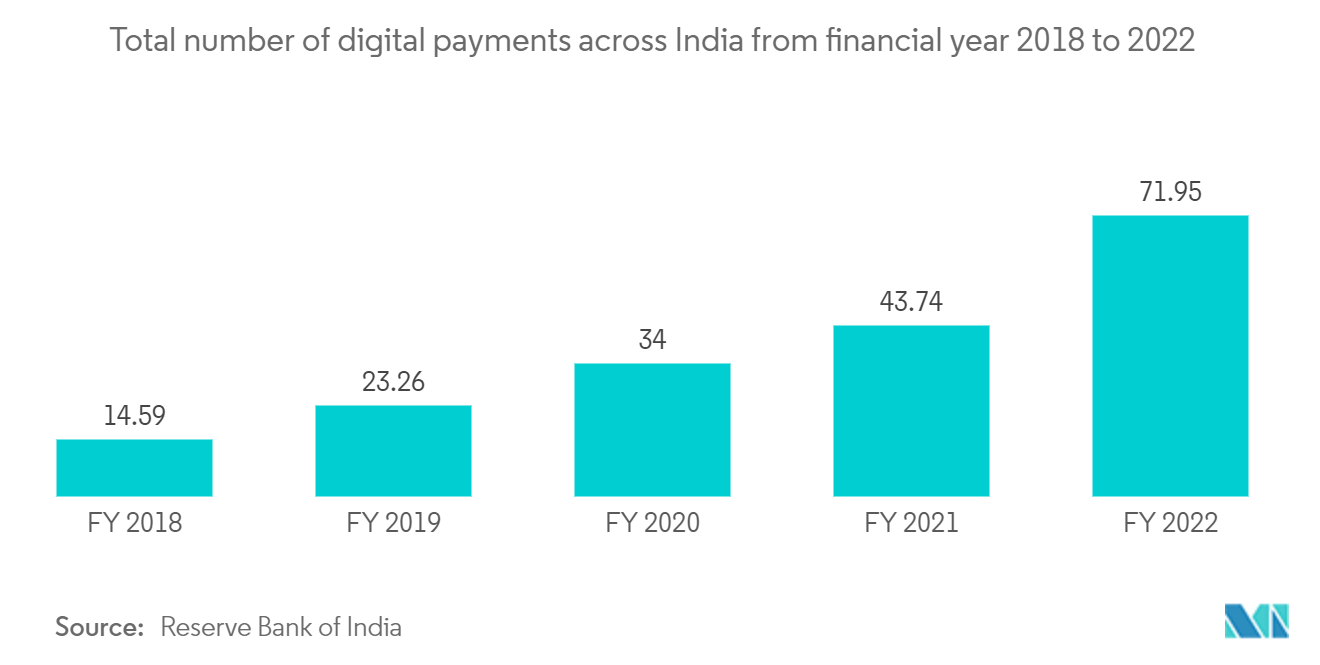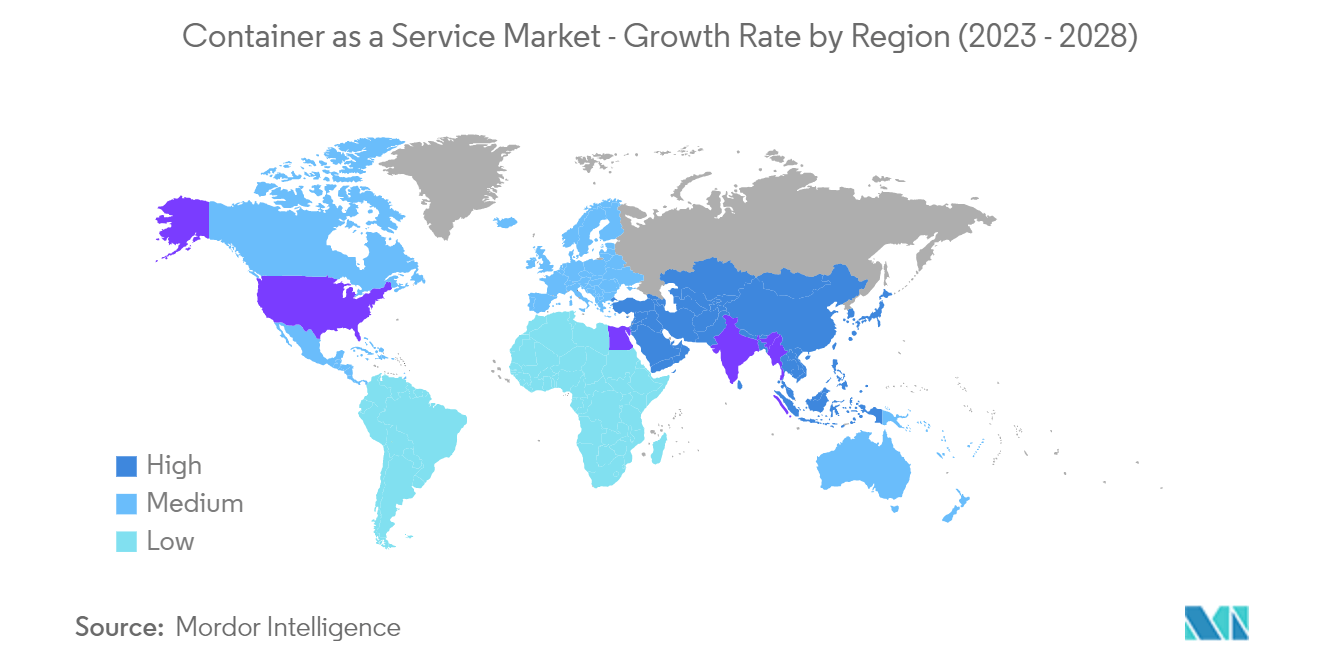Market Trends of Container as a Service Industry
This section covers the major market trends shaping the Container as a Service Market according to our research experts:
BFSI Sector Expected to Have Maximum Application
- Fintech has changed the banking system drastically, as more and more BFSI companies have embraced the cloud and diversified their cloud providers. Also, technologies like mobile banking, digital payments, etc., are revolutionizing the banking industry, especially in emerging countries like India and China. Hence, the use and deployment of CaaS models are also increasing. The container application platform is designed to automate the hosting, configuration, deployment, and administration of application stacks across any cloud provider.
- These solutions help the banks modernize their digital foundations for a competitive edge, speeding service delivery in branches of the future, optimizing payment processing models, and deepening customer engagement without compromising on cybersecurity. It gives application developers self-service access so they can easily deploy applications on demand that can help banks move more quickly and decrease time to market in the increasingly competitive environment of financial services. These solutions help financial institutions develop and support a broad range of applications while maintaining stringent security and compliance requirements. It also enables companies to deliver new applications to engage customers and associates.
- Creating and delivering on-demand financial services requires the use of cutting-edge digital tools. One of them is Kubernetes (K8s), which is mainly an open-source container orchestration and deployment technology. Applications can run seamlessly across platforms, regions, and clouds because of this technology's virtual operating systems. By operationalizing containerization with Kubernetes, banking organizations can thus offer a seamless experience to customers, automate savings, engage in innovation, and protect client data.
- In order to meet the needs of banks today, containerized programs' agility, scalability, and a quantum leap in user experience are essential. Whether in a private, public, or hybrid cloud, Kubernetes' container-based orchestration is the ideal option for financial services firms. So, banks can use Kubernetes to deploy containerized apps with an architecture that focuses on microservices, API-first, cloud-native, and headless, no matter what industry they work in-commercial, retail, or investing.
- As per the Reserve Bank of India, in the financial year 2022, the total count of digital payments that were recorded across India was around 71 billion. This was a drastic increase compared to the previous three years. Hence, with the rise in the number of digital payments, the need for using the container as a service will also increase considerably, facilitating the market's growth significantly.

North America is Expected to Account the Largest Market Share
- The North American region is expected to account for the largest market share in the Container as a Service market all throughout the forecast period. Most of the growth can be attributed to the growing economies of the U.S. and Canada, which are doing better because they are making more industrial goods.
- Also, factors such as increased demand for microservices, technological advancements, and the growing need for the adoption of microservices in this region are driving the market in the region. Also, the biggest CaaS solution providers in the region are coming up with new ideas and growing their businesses to get the most market share and take advantage of the huge opportunities in the region.
- For instance, in December 2022, AWS launched Finch, an open-source, cloud-agnostic command-line client designed especially for running, building, and publishing Linux containers. Finch primarily bundles together a number of open-source components such as nerdctl, lima, containerd, and buildkit. During the release, Finch was mostly a native macOS client that worked on all Mac CPU architectures.
- Also, in March 2022, Docker, Inc. revealed that it had picked up an additional sum of around USD 105 million in financing that, among other things, would be applied to extending the reach of the Docker container application development tools that developers mainly utilize into the realm of serverless computing frameworks and emerging WebAssembly (Wasm) and Web3 platforms. The company also says that application development teams that mainly use Docker containers release code 13 times more often, increase productivity with new technologies in 65% less time, and reduce the mean-time-to-remediate (MTTR) of security vulnerabilities by 62% compared to traditional ways of building applications.
- Moreover, in March 2022, Oracle Cloud Infrastructure (OCI) expanded with 11 new computing, networking, and storage services and capabilities that allow customers to run their workloads faster and more securely at a much lower cost. New offerings offer customers truly flexible core infrastructure services, automatically optimizing resources, especially to match application requirements, and significantly minimizing costs. Also, the company's new services include container instances that let customers use containers without directly managing the hosting VM or needing Kubernetes orchestration; AMD E4-Dense Compute instances that let customers use workloads that benefit from attached NVMe drives that offer low-latency storage; and an Oracle Cloud VMware Solution.


